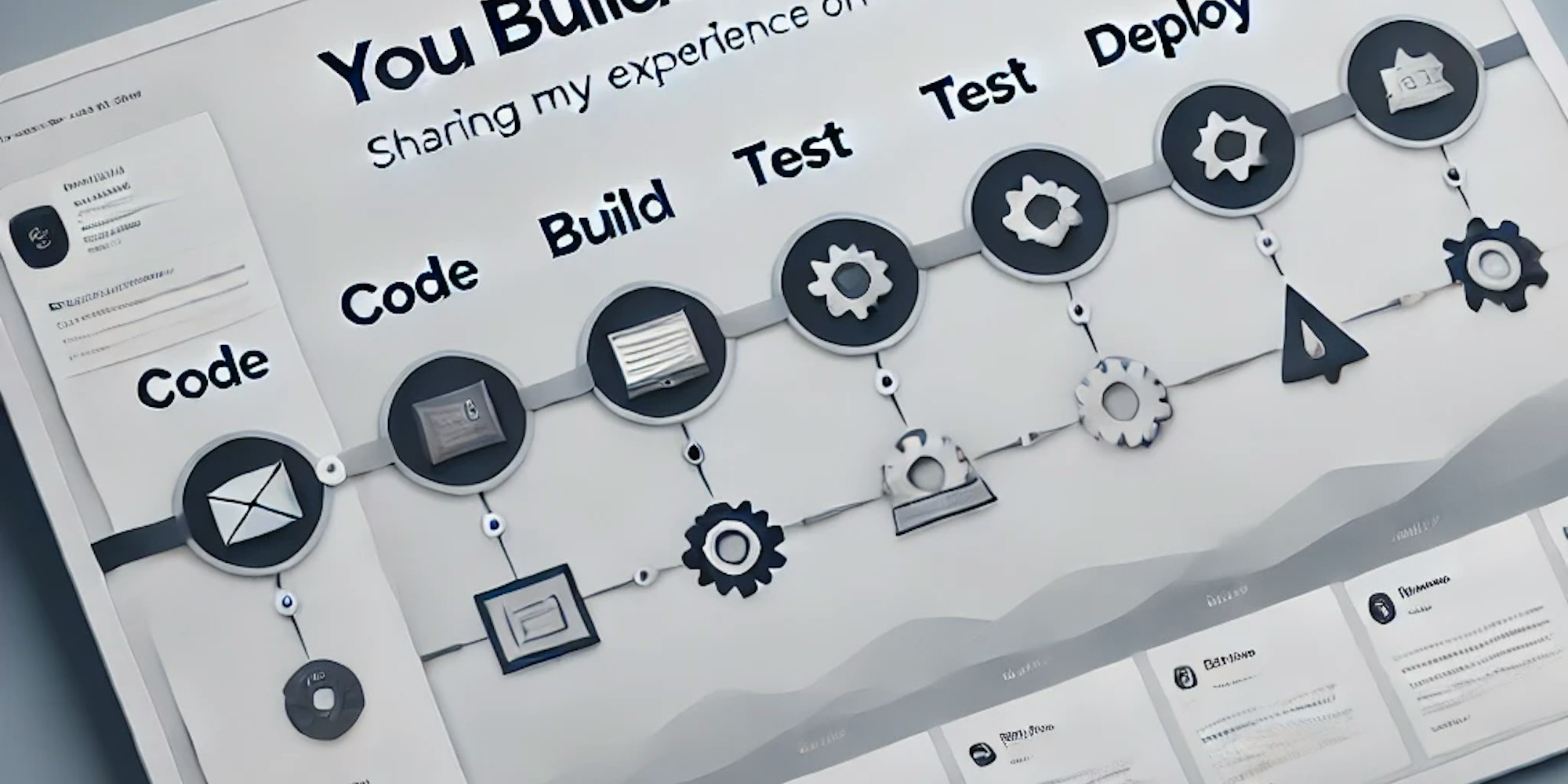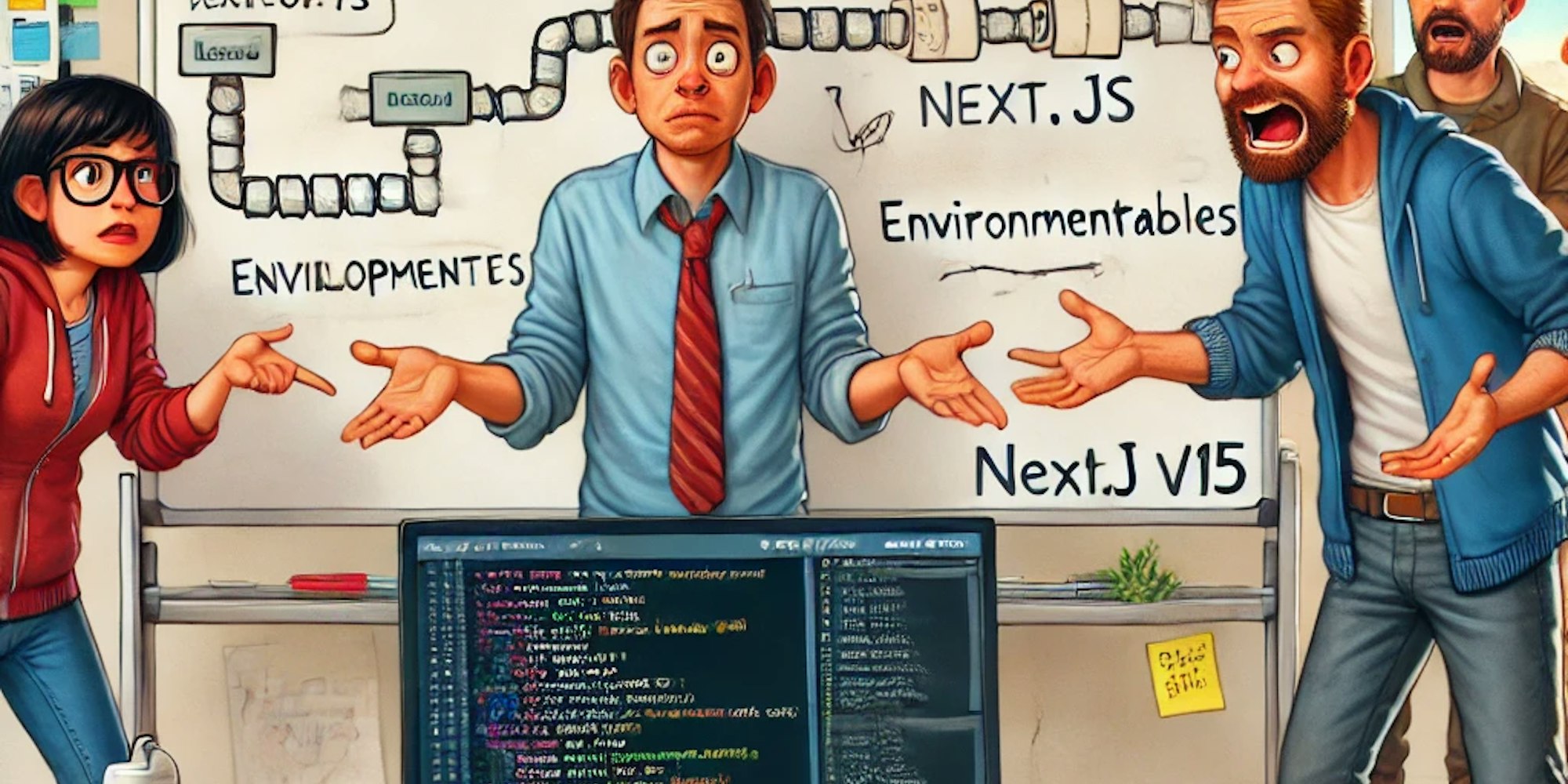You build it, you run it
There isn't much to say about the title — you should already have a clear idea of what this is about. Developers should be self sufficient and set all the required data for deploying successfully the app they develop.
In this post, we’ll walk through a workflow that a typical developer might follow.
As an example, we’ll use a Next.js project I created as a "hello world" demo. You can find it here: hello-world-nextjs-k8s-deployment. We’ll be using GitHub Actions to automate the process. 😊
**Note:** We assume you have access to a Kubernetes cluster capable of handling and deploying your project. A few months ago, I published some guides on how to set this up. While they may be slightly outdated, they’re still worth checking out. If that doesn't help, you can always turn to LLMs for assistance. Good luck!
To make this process work, you’ll need to complete the following steps:
1. Dockerize your project
Prepare a Dockerfile for your project to ensure it can be built and run inside a container.
2. Create a build workflow with GitHub Actions
Set up a GitHub Actions workflow that automatically builds the Docker image for every commit to the `main` branch and pushes it to Docker Hub.
3. Create a deployment workflow
Set up another GitHub Actions workflow that runs on demand. This workflow will instruct the Kubernetes cluster to pull the latest Docker image and deploy it.
4. Coordinate with DevOps
Work with your DevOps team to ensure that the deployment is accessible from the internet.
Dockerize your Project
In this case, it’s pretty straightforward, and we can go with the "good enough" LLM approach. Let’s use ChatGPT for this https://chatgpt.com/share/67601353-a42c-800f-aee9-805ef2d7b33d
Create a Build Workflow
This is part of the CI, so you don't need to do much here. I’ve pasted the one I use. You can either use an LLM to generate it (although this might result in an updated version of some plugins) or use Docker plugins, which you can find here or here.
The file will live in the same repository as the code. Since it’s part of the project, there’s no reason for it to be stored elsewhere.
name: Build Docker Image
on:
push:
branches:
- main
pull_request:
branches:
- main
jobs:
build:
runs-on: ubuntu-latest
env:
DOCKER_HUB_REPOSITORY: ${{ secrets.DOCKER_HUB_REPOSITORY }}
IMAGE_NAME: "nextjs-app"
IMAGE_TAG: ${{ github.sha }}
steps:
- name: Checkout repository
uses: actions/checkout@v4
- name: Set up Docker Buildx
uses: docker/setup-buildx-action@v3
- name: Log in to Docker Hub
uses: docker/login-action@v3
with:
username: ${{ secrets.DOCKER_HUB_USERNAME }}
password: ${{ secrets.DOCKER_HUB_ACCESS_TOKEN }}
- name: Build and push Docker image
uses: docker/build-push-action@v6
with:
context: .
push: true
tags: ${{ secrets.DOCKER_HUB_USERNAME }}/${{ env.IMAGE_NAME }}:${{ env.IMAGE_TAG }}
- name: Logout from Docker Hub
run: docker logoutAdd the secrets
Since we use Docker Hub as our artifact repository, we need to have a repository (which you will need to create), a user, and a token. You can find these at [hub.docker.com](https://hub.docker.com).
DOCKER_HUB_REPOSITORY: xxx
DOCKER_HUB_USERNAME: xxx
DOCKER_HUB_ACCESS_TOKEN: xxxCreate Deploy Workflow
Once the image is built and pushed to Docker Hub, we create another workflow to instruct the Kubernetes cluster to download this image and deploy it.
As before, the file will reside in the same repository as the code.
name: Deploy to Kubernetes on EC2
on:
workflow_dispatch:
inputs:
IMAGE_TAG:
description: "Tag for the Docker image"
required: true
jobs:
deploy:
runs-on: ubuntu-latest
env:
DOCKER_HUB_REPOSITORY: ${{ secrets.DOCKER_HUB_REPOSITORY }}
IMAGE_NAME: "nextjs-app"
IMAGE_TAG: ${{ github.event.inputs.IMAGE_TAG }}
steps:
- name: Checkout repository
uses: actions/checkout@v4
- name: Install kubectl
run: |
curl -LO "https://storage.googleapis.com/kubernetes-release/release/$(curl -s https://storage.googleapis.com/kubernetes-release/release/stable.txt)/bin/linux/amd64/kubectl"
chmod +x ./kubectl
sudo mv ./kubectl /usr/local/bin/kubectl
- name: Configure kubeconfig for the cluster
run: |
mkdir -p ~/.kube
echo "${{ secrets.KUBECONFIG_CONTENT }}" | base64 -d > ~/.kube/config
chmod 600 ~/.kube/config
- name: Verify kubectl connection
run: |
kubectl config view
kubectl cluster-info
kubectl get nodes
- name: Prepare deployment file
run: |
# Print environment variables
echo "DOCKER_HUB_REPOSITORY: ${{ env.DOCKER_HUB_REPOSITORY }}"
echo "IMAGE_TAG: ${{ env.IMAGE_TAG }}"
# Print the deployment file before replacement
echo "Before replacement:"
cat deployment.yml
# Do the replacement
sed -i "s|image: PLACEHOLDER_IMAGE|image: ${{ env.DOCKER_HUB_REPOSITORY }}:${{ env.IMAGE_TAG }}|" deployment.yml
# Print the deployment file after replacement
echo "After replacement:"
cat deployment.yml
# Verify the exact image string that will be used
echo "Expected image string: ${{ env.DOCKER_HUB_REPOSITORY }}:${{ env.IMAGE_TAG }}"
grep "image:" deployment.yml
# Add this new step to actually apply the deployment
- name: Apply deployment
run: |
kubectl apply -f deployment.yml
kubectl get deployments
kubectl get podsYou need an additional secret containing the configuration required to use `kubectl` remotely.
secrets.KUBECONFIG_CONTENT
You can obtain the content using this LLM chat: [chatgpt.com/share/6760237b-8838-800f-8900-ef2d42e4eb86](https://chatgpt.com/share/6760237b-8838-800f-8900-ef2d42e4eb86) or, alternatively, you may need to ask your DevOps team or manager for it.
Additionally, you’ll need a Kubernetes `deployment.yml` descriptor file in place.
Here’s mine:
apiVersion: apps/v1
kind: Deployment
metadata:
name: nextjs-app-deployment
labels:
app: nextjs-app
spec:
replicas: 3
selector:
matchLabels:
app: nextjs-app
template:
metadata:
labels:
app: nextjs-app
spec:
containers:
- name: nextjs-app-container
image: PLACEHOLDER_IMAGE # PLACEHOLDER_IMAGE
resources:
requests:
cpu: "0.1"
memory: "512Mi"
limits:
cpu: "0.1"
memory: "512Mi"
ports:
- containerPort: 3000 You see this PLACEHOLDER_IMAGE, right? This is because, during the CD process, the content of this file will be modified "on the fly" to instruct Kubernetes to pull the correct image. This modification happens in the job mentioned above.
With this in place, you can run this job directly from the **Actions** tab in GitHub, passing the image tag you want Kubernetes to deploy.
And your project will be successfully deployed in the Kubernetes cluster after align with your DevOps.



